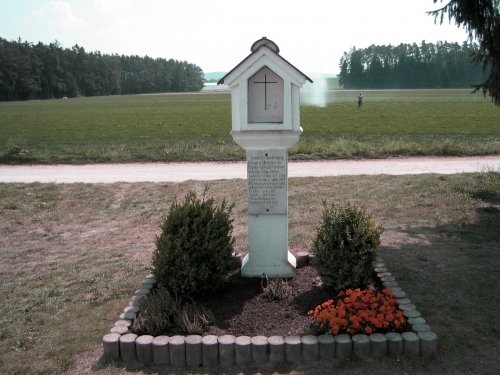Hallowe’en is here again.
Once a year we spend a less-than-scary evening watching second-rate horror movies whilst waiting for a knock on the door so we can hand out candy to kids in cardboard costumes. Whatever happened to the most fright-filled of festivals, the most harrowing of holidays?
Thrillseekers who are brave enough to seek out the truly terrifying, to face their fear of ghosts and ghouls or to explore the unexplainable can visit the strangest, spookiest and down-right scariest of places the world has to offer.10. Hinterkaifeck, Germany
In the picturesque Bavarian landscape of Southern Germany there stands a small memorial where once a farmhouse stood. The monument stands testament to a brutal mass murder that shattered the peace of this rural landscape and haunts Germany to this day.
In April 1922 neighbours of the Gruber family knocked on the door of their farmhouse. The concerned visitors had not seen any member of the household for several days, unusual in the close-knit community. The neighbours found the body of the family’s maid and the shattered remains of two-year old Josef, still laying in his cot.
No sign of the 4 remaining family members could be found, until the barn was searched. There, the bodies of Andreas, his wife Cazila and their adult daughter Viktoria lay in the blood-soaked straw, hacked apart. Next to her grandparents lay Viktoria’s 7-year-old daughter, who had apparently survived for several agonised hours, pulling out her hair in tufts.
The police interviewed hundreds of suspects and even consulted clairvoyants for leads. To no avail; the murders remain unsolved. The locals were so shocked by the crime that they demolished the farm the following year.
But the most disturbing aspect of the case is not the brutality of the murder. It is the single clue that Andreas was able to furnish before his death. A few days prior to his death Andreas mentioned to neighbours that he’d seen footprints in the snow leading from the woods to the farm but not back, and spoke of hearing footsteps in the attic. The killer apparently lived hidden in the family home for several days before he killed them.
9. Chuuk Lagoon, Micronesia
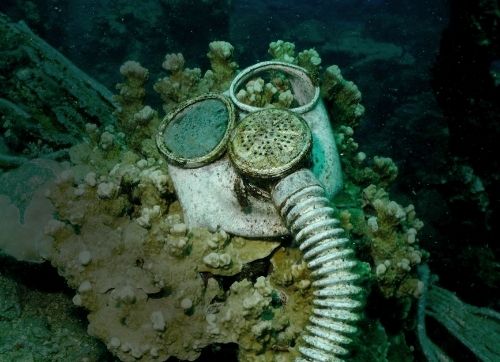
© Wikivoyage WTS
Chuuk Lagoon is a tropical paradise. Pristine white sands surround an azure blue sea, below the softly lapping waves a lush garden of coral thrives with colourful sealife.
Things weren’t so peaceful in the archipelago during February 1944. The Japanese Imperial fleet were using the reef as a natural harbour to gather their forces before attacking the Americans.
To seize the initiative in this brutal slogging match, US commanders ordered the destruction of the Japanese fleet, deciding to sink the ships as a they sat in their safe haven of Chuuk.
A 24-hour bombing raid saw over 500 American planes leave the decks of their aircraft carriers and deliver punishing destruction to the Japanese. 47 ships were lost and 270 planes destroyed.
Once the smoke had cleared the Japanese fleet had slipped beneath the water, taking with it thousands of lives. Further raids added to the wrecks on the bottom.
Chuuk Lagoon is now one of the world’s most popular scuba diving locations. Visitors can don fins and masks to swim through the twisted wreckage and charred bones that mean this tourist destination is also one of the world’s biggest war graves.
8. Willard Asylum, New York, USA
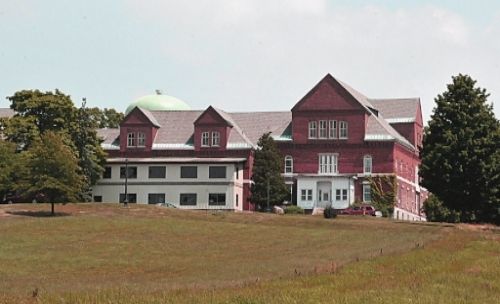
© Roy Lotz
To give it its full title, Willard Asylum for the Chronic Insane became home to some of New York state’s most disturbed minds.
Willard opened its doors in 1869, welcoming Patient no.1, Mary Rote. She’d spent the last few years at another asylum, chained naked to a wall and offered no real treatment. Willard was light years ahead of other psychiatric hospitals and had soon filled its 250 beds, with more patients due to arrive.
By 1890 the site housed over 2,000 patients in what was the largest psychiatric hospital in the USA. Many of these inmates were considered ‘incurable’, unlikely ever to be released. Willard became a community for those who would never return to the outside world.
The facility was completely self-sufficient, with inmates running the farm, cinema and even a bowling alley. Of course, the site also features a morgue and extensive graveyards.
Guided tours of the asylum are offered to paying visitors who can tour the site and learn its tragic history before they – unlike its inmates – can leave again.
7. Hashima Island, Japan
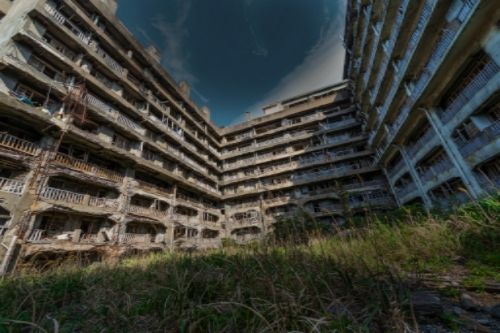
© Jordy Meow
Hashima Island is known by many names; the English translation means Battleship Island. But for many who lived, toiled and died there, it was Hell Island.
Lying 15km off the coast of Nagasaki, Hashima stands as a preserved monument to thousands of prisoners of war used as slave labour by the Japanese regime during the 1930s and 1940s.
The island breaks out of the waves in an area rich in undersea coal. Whilst mining operations were active from 1887, it was the fuel-hungry Japanese war machine that opened the darkest chapter of the island’s history.
The 16-acre site served as a labour camp for 700 Chinese prisoners and Korean labourers, many of whom were worked to death in the choking mines beneath the island.
The mining work continued after the war until 1974, when it was announced the mine would close, forcing thousands of inhabitants to leave. And they left in a hurry, many without their belongings.
Many of the island’s cramped apartments are still fully furnished: clothes hang in closets and open beer bottles still sit on tables laid for dinner.
6. Catacombs, Paris, France
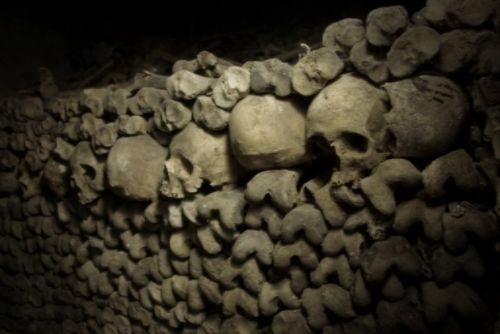
© Janericloebe
Beneath the lively streets of Paris lies another city, a network of maze-like tunnels and rooms. These dark, dusty catacombs aren’t built with bricks and mortar, but with the bones and skulls of 6 million Parisian dead.
In the 18th Century Paris’ cemeteries were overflowing. Corpses broke through the topsoil and the newly dead were often dumped by the roadside due to the lack of new burial grounds.
In 1780 heavy rains caused a wall next to Paris’ largest cemetery, Les Innocents, to collapse. An avalanche of rotten flesh poured into the city streets, forcing city officials to act. The authorities ordered the limestone quarries to be consecrated, and over the next two years all the human remains from Les Innocents were moved to the tunnels.
By 1859 there were 300km of bone-lined catacombs winding below the streets. In the 1950s a law was passed making it illegal to enter the tunnels – not that it stopped Parisians holding secret meetings, meeting lovers or even watching films in a cinema built in the world’s largest graveyard.
5. Bhangarh Fort, India
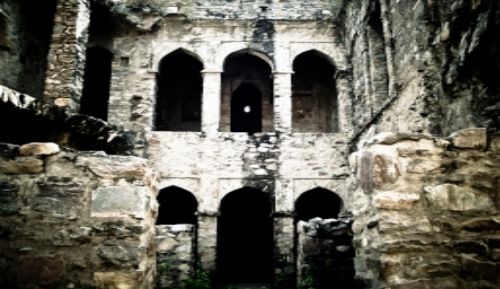
© Debjyoti Banerjee
Nestled in the valleys of Rajasthan stands a deserted city. Once the thriving centre of an ancient kingdom, the city was cursed by a sorcerer whose advances were rejected by the city’s princess.
After attempting to woo the princess with a love potion, the wizard was crushed by a boulder. His dying words condemned the city and everyone in it to a grizzly death. Not long after an invading army sacked the citadel, slaughtering the 10,000 inhabitants. Legend has it that when the princess was murdered, the sorcerer captured her spirit and it remains trapped by his curse.
Today the site is known as the most haunted place in Asia. Remarkably well-preserved, the fort attracted visitors who regularly report seeing ghosts around the city, with the princess and her captor often being seen around the palace.
Reports of paranormal activity suggest that some sight-seers have died after encountering tormented spirits in the fort. So afraid are local people of the haunted city that they moved their whole village down the valley to escape it.
4. Centralia, Pennsylvania, USA
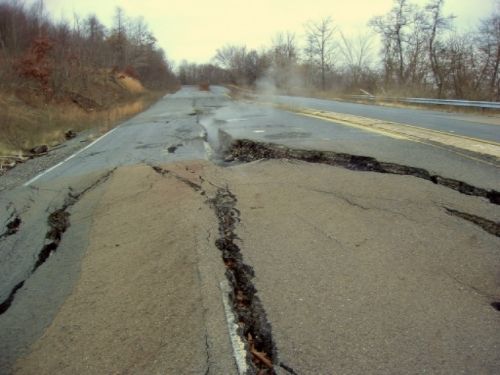
© JohnDS
There are a few ghost towns on this list, but only one of them is creepy enough to have inspired video games and its own horror movie. The story of Centralia was the inspiration for the Silent Hill franchise.
Centralia was founded as a coal mining town and quickly developed a reputation for being a tough place to live. Assaults were commonplace and murder became a regular occurrence as industrial disputes turned to violence.
After being assaulted by striking miners, a Catholic priest was reported to have cursed the land under the town, which some residents cite as a cause of the devastating coal fire that caused the destruction of Centralia.
In 1962 a coal seam under the town caught fire, spreading to the labyrinth of tunnels and causing holes to open up in the streets as poisonous smoke poured through cracks in the roads.
The fire still burns beneath Centralia as the ten remaining residents cling to their homes, living in the ruins of the old town.
3. Overtoun Bridge, Scotland
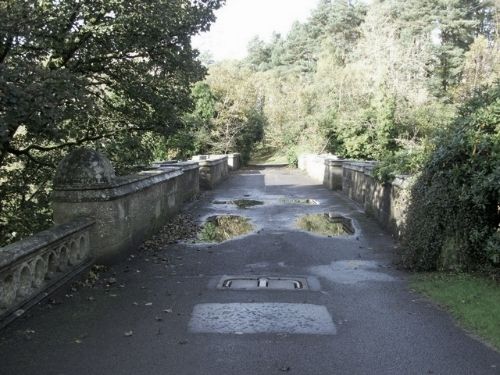
© Lairich Rig
An ornate Victorian bridge spans the picturesque Overtoun Burn in the serene Scottish countryside. But this peaceful scene belies a lethal secret.
Over 600 dogs have leapt over the side of the bridge, tumbling 50ft onto the jagged rocks below. The dogs are often breeds with long snouts and always jump from the same spot. The urge to jump isn’t restricted to canines; humans too have reported feeling ghostly hands pushing them towards the edge.
Most horrifying of all, in 1994 a man named Kevin Moy walked across the bridge with his wife and 2-week old son. Moy snatched up the infant, throwing him into the gorge and attempted to jump after him, only to be stopped by his wife.
One theory suggests that the valley channels sound in such a way that disorientates dogs and causes them to panic. Celtic mythology describes the area around the bridge as a ‘thin place’ where this world and the afterlife can interact. Is it possible that the dogs are attempting to leap from this world into another?
2. Pripyat, Ukraine
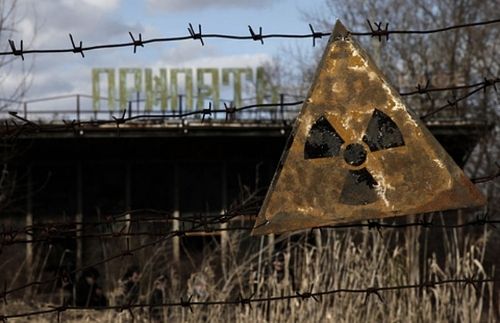
© D. Markosian
For 16 years Pripyat was a purpose-built haven for the hard-working families who lived there. The city was home to nearly 50,000 people who enjoyed its parks, cinemas, cafes and restaurants. Then in one day the entire population left their homes never to return.
The town’s biggest employer was the nearby Chernobyl nuclear power plant. In April 1986 a reactor overheated and exploded, sending the core into meltdown. Radioactive material was blasted into the air and started fires around the building.
For 24 hours crews battled to control the fires and prevent a second nuclear explosion. During this time a pall of radioactive smoke hunger over Pripyat. The city’s residents could taste radioactive metals in the air but were told by government officials that all was well.
The next morning citizens woke to find the streets full of buses; everyone would be evacuated and could only bring one suitcase. The buses began loading at 2pm; by 3pm the city was deserted. The residents would never return.
Pripyat is now a time capsule, permanently trapped in April 1986. Cars remain where they were parked, bumper cars lay idle in the amusement park and children’s books remain open on desks in the city’s school.
1. Aokigahara – The Suicide Forest, Japan
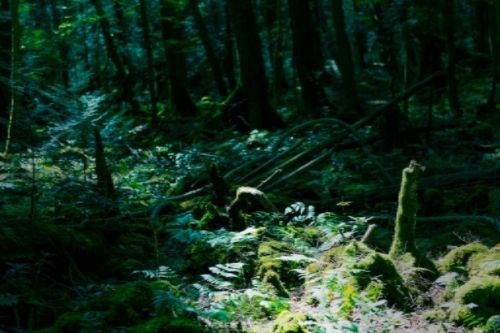
© Jordy Meow
Under the shadow of Mount Fuji is the popular tourist destination of Aokigahara – or ‘Seas of Trees’ – forest. The thickly wooded park blocks out manmade noise and becomes a peaceful playground for hikers and picnickers.
The twisted tree branches may also be hiding some unpleasant surprises. Every year hikers find 100 dead bodies; the forest is a suicide hotspot.
Signs begging those intending to kill themselves to seek help greet visitors to the forest and the government has stopped printing statistics about the forest to avoid publicity.
It is said that the trees are haunted by spirits which fill visitors with despair, and those who die in the forest are seen wandering its paths in ghostly form.
Have you visited any of these areas? Where's the spookiest place you've visited or lived in? Let us know in the comments!
Article by Andy Scofield

